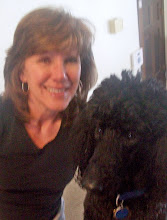Below is a complete listing of various activities associated with chapter 2 of Freeman's and Freeman's Written and Second Language Acquisition as found at the end of the readings. Keep in mind, the primary questions related to this particular section of text are the following:
- Is written language acquired naturally or learned consciously?
- Can people acquire a second language?
I have labeled the following activities with either a (L) for learning/word recognition view or an (A) for acquisition/sociopsycholinguistic view or both (LA). We'll begin with "the students" view:
- (L) The students look up words in the dictionary to write definitions;
- (A) The students make a Venn diagram to compare two stories;
- (L) The students practice sounding out words;
- (L) The students read in round-robin fashion;
- (L) The students correct peers when they make a mistake during reading;
- (A) The students identify words on a big book page that start with the same sound;
- (A) The students group cards with classmates' names by a criterion on such as first or last letter;
- (A) The students write rhyming poetry and then discuss different spellings for the same sound;
- (L) The students ask the teacher how to spell any word they don't know;
- (A) The students read a language experience story they have created with the teacher;
- (A) The students work in pairs to arrange words from a familiar chant into sentences;
- (L) The students divide words into syllables;
- (LA) The students on a worksheet, draw a line from each word to the picture that starts with the same sound;
- (A) The students make alphabet books on different topics.
In regards to the above, the (L) activities all adhere to the Traditional Learning View which Freeman and Freeman describe on p. 33 of our book. In contrast, the (A) activities adhere to the Current Acquisition View referenced on the same page of our text. The obvious goal of the (L) activities is to provide classroom instruction to students directly so that students are able to reproduce correct language forms; whereas, the (A) activities provide teaching that is making language comprehensible so that learners can use language for a variety of different purposes. The former is definitely the instructional style used by my teachers when I was in school many, many years ago. I see my own personal literacy instructional style as being a more current combination of both the (L) and (A) viewpoints.
Next, I will label the following activities either (L), (A), or both (LA) from "the teacher's" view:
- (L) The teacher preteaches vocabulary;
- (A) The teacher does a shared reading with a big book;
- (L) The teacher makes sure that students read only books that fit their level;
- (L) The teacher has students segment words into phonemes;
- (A) The teacher writes words the students dictate for a story and has students help with the spelling of difficult words;
- (L) The teacher asks students to look around the room and find words starting with a certain letter;
- (L) The teacher uses decodable texts;
- (A) The teacher sets aside time for SSR (sustained silent reading) each day;
- (L) The teacher teaches Latin and Greek roots;
- (A) The teacher has students meet in literature circles;
- (L) The teacher conducts phonics drills;
- (A) The teacher chooses predictable texts;
- (A) The teacher teaches students different comprehension strategies;
- (A) The teacher does a picture walk of a new book;
- (L) The teacher uses a variety of worksheets to teach different skills.
Once again, I see a distinct theme of what I would term the "old" and the "new" in teaching practices. I paraphrase what Freeman and Freeman state on p. 46 of our text that learning viewpoint focuses on correct language form and pays less attention to the content; whereas, the acquisition viewpoint focuses on always making meaning of our reading/writing. In addition, I see a predictable pattern between how I was taught to read/write (L) and how we as educators teach reading/writing today (LA). I believe a balance of the two viewpoints is the best possible approach to teaching ELL's a second language as well as English speaking students literacy by today's standards. As I've said before, I feel that what's good practices for ELL's is good practices for all students.

I agree a balance can be a good practice when teaching ELL students- I see the benefit of Acquistion for ELL students because doing more independant activities can aid them to using the second language more naturally. However the 'learning' method can be very necessary to ensure they are using the correct usage of the language and learning it the right way directly.
ReplyDeleteI really liked the way you laid out you blog on this assignment. I felt as if I was repeating information over and over. I like the distinction you had between the old and the new teaching practices and how you tied it into what you were taught and what you are doing in your own teaching. I found it interesting that you had both L/A on the worksheet. I had a hard time making sense of both on my own. Very well done.
ReplyDeleteTH